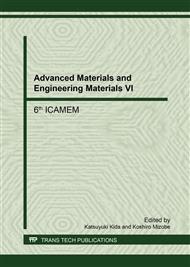p.413
p.418
p.423
p.428
p.433
p.441
p.446
p.451
p.456
Water-Rock-CO2 Interaction in Hot Dry Rock - A Review
Abstract:
Recently, using CO2 as fluid to exploit thermal energy in hot dry rock has attracted the attention of researchers. The water-rock-CO2 interaction in hot dry rock CO2 will change reservoir mineral composition and physical characteristics (such as porosity and permeability) by precipitation and dissolution of mineral in artificial geothermal reservoir, which will influence the stable operation of CO2-EGS and affect the scaling and corrosion in pipes and equipment. On the other hand, water-rock-CO2 interaction is closely related to CO2 sequestration. In this paper, the interaction mechanism including phase equilibrium, mineral composition analysis, temperature and brine component , interaction region and interaction damage are summarized, which can be used as a guide for further research。We find that the water-rock-CO2 interaction analysis now is most for single factor and single mineral component. And the mechanism of reaction between single supercritical CO2 and mineral is not clear. Study about spatio-temporal evolution of mineral component and fluid component, combined with the spatio-temporal evolution of temperature and pressure, is little.
Info:
Periodical:
Pages:
446-450
Citation:
Online since:
August 2017
Authors:
Price:
Сopyright:
© 2017 Trans Tech Publications Ltd. All Rights Reserved
Share:
Citation:


